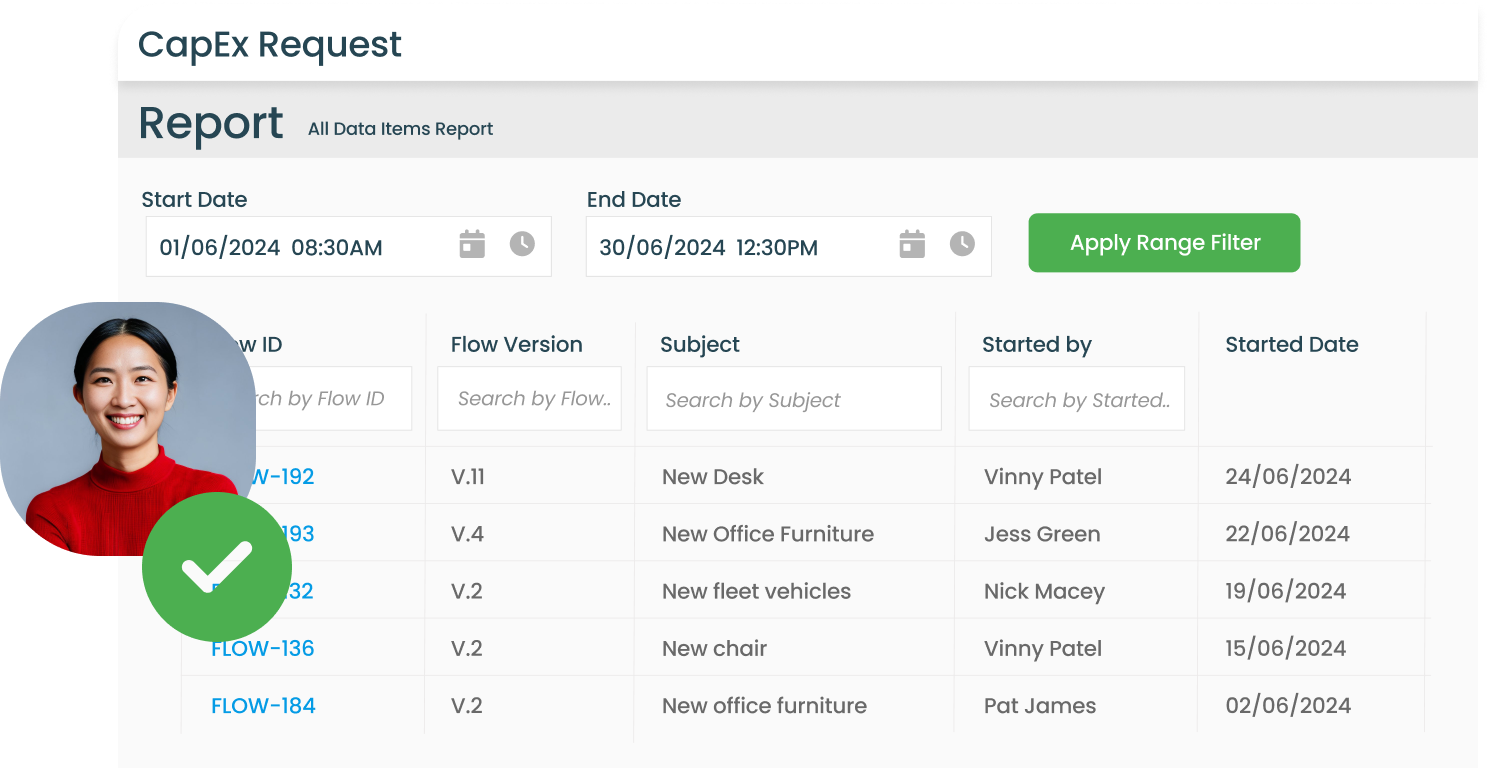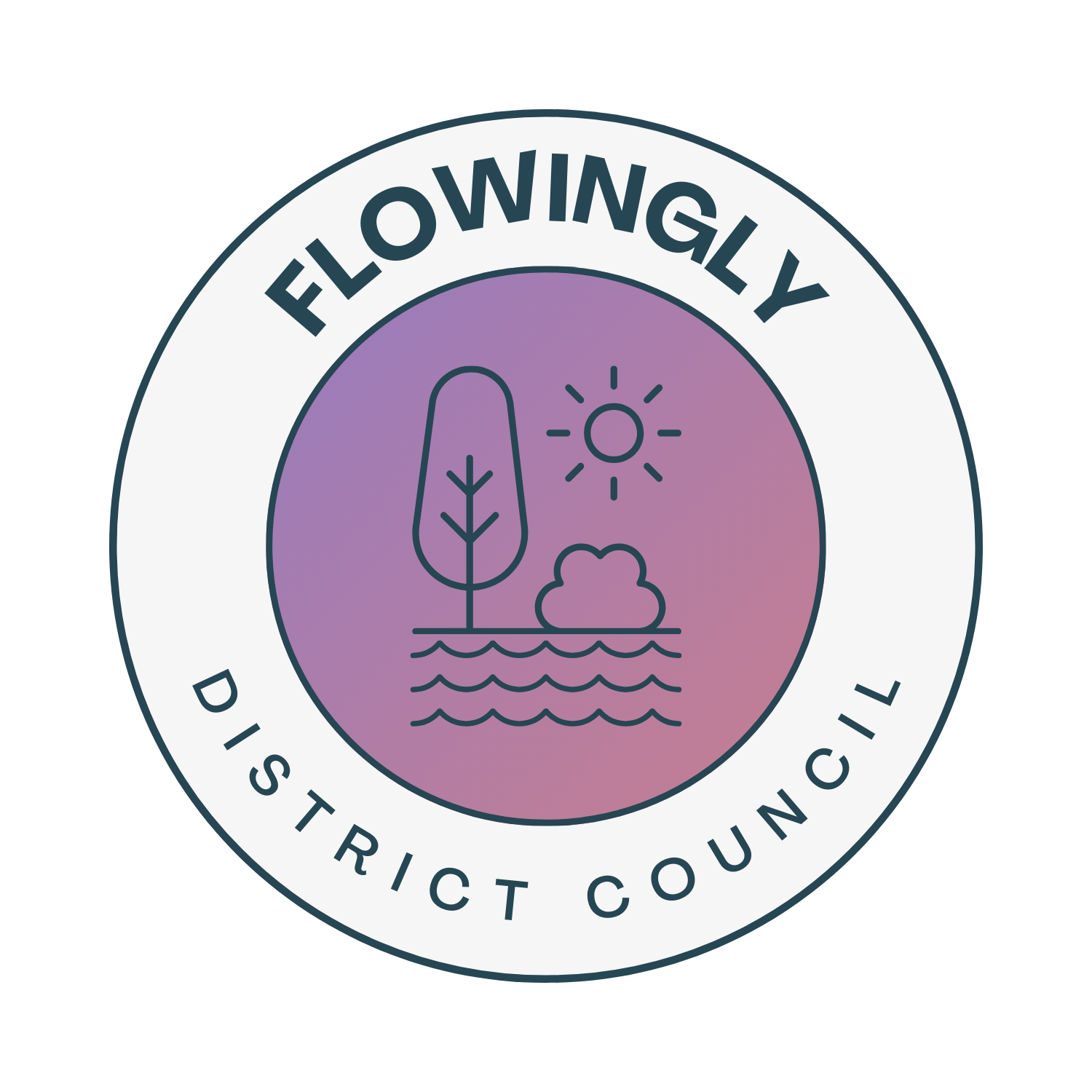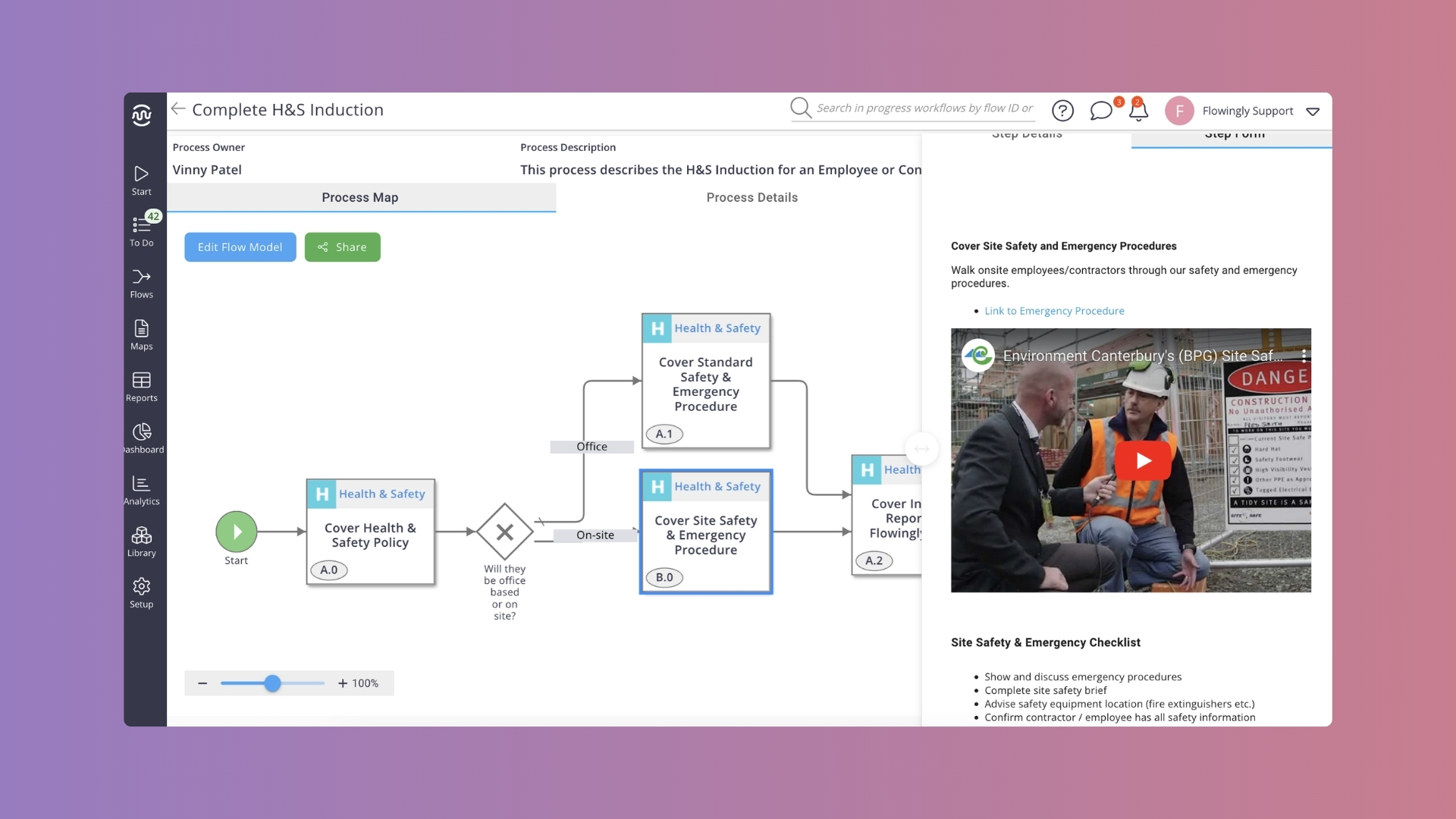How Process Automation Can Keep Auditors Happy and Your Team Sane
In this interactive guide, we explore how teams can tackle compliance issues with process mapping and automation.

Picture this: It’s 3 AM, and your compliance officer, is bleary-eyed and caffeine-fuelled, frantically sifting through mountains of paperwork. The annual audit is looming, and the team is in a panic. Sound familiar?
Keeping up with ever-changing regulations feels like trying to nail jelly to a wall. But what if there was a way to turn this compliance nightmare into a well-oiled machine? Enter the world of process automation – your secret weapon in the battle against regulatory chaos.
In this guide, we’ll explore how clever use of technology can transform your compliance processes from a headache-inducing burden to a smooth, efficient operation. We’ll show you real-world examples, share practical tips, and guide you through the journey of automating your compliance tasks. By the end, you’ll be ready to say goodbye to late nights and hello to a more streamlined, stress-free approach to meeting regulatory requirements.
So, grab a cuppa, get comfy, and let’s dive into the world of compliance automation. Trust us, it’s more exciting than it sounds!
The Compliance Conundrum
Remember the days when a firm handshake sealed a deal, and a simple ledger kept the taxman happy? Neither do we. Today’s business landscape is a maze of regulations, each with its own set of complex requirements.
The Current State of Play
From the Privacy Act 2020 to anti-money laundering laws, businesses are juggling more compliance balls than ever before.
Dropping even one of those balls can lead to more than just a bruised ego or an embarrassed employee – we’re talking hefty fines, reputational damage, and in some cases, a one-way ticket to court.
Real-World Whoopsies
Let’s look at a cautionary tale. In 2020, a major New Zealand financial services provider was slapped with a NZ$3.5 million fine for anti-money laundering breaches. The kicker? Much of this could have been prevented with better compliance processes and systems.
But it’s not just the big fish feeling the heat. Small and medium-sized businesses often struggle the most, lacking the resources to keep up with the regulatory tidal wave.
The Hidden Costs of Manual Compliance
While the fines make headlines, it’s the day-to-day drain on resources that really adds up:
Time Sink
Staff spending hours on repetitive tasks instead of value-adding activities.
Error Prone
Manual data entry and checks increase the risk of mistakes.
Scalability Struggles
As your business grows, so does the compliance workload.
Audit Anxiety
Scrambling to pull together documentation for audits.
Opportunity Cost
Resources tied up in compliance could be used for innovation and growth.
Pro Tip:
Start by tracking the time your team spends on compliance tasks. You might be surprised (or shocked) by the results!
The good news? There’s a better way. In the next section, we’ll introduce you to your new compliance BFF: process automation. Spoiler alert – it doesn’t require a computer science degree or a magic wand!
Enter Process Automation
What is Process Automation?
Think of process automation as your very own digital PA. It’s like having a super-efficient, never-sleeps assistant that takes care of repetitive tasks, checks for errors, and keeps everything humming along nicely. In the world of compliance, it’s the difference between herding cats and, well, not herding cats.
Did You Know?
According to a 2023 survey by KPMG Australia, 68% of Australasian businesses reported significant time savings after implementing compliance automation tools. That’s a lot of long lunches earned back!

Let’s break it down with an example. Imagine you’re running a mid-sized local council in New Zealand. You’ve got to keep track of:
- Resource consent processes
- Building code compliance
- Health and safety regulations
- Local Government Act requirements
- Financial reporting obligations
Without automation, that’s a recipe for a compliance hangover. But with the right tools, you can:
- Automatically generate and update consent documentation
- Set reminders for key compliance dates and council meetings
- Track employee training and certifications for health and safety
- Monitor and report on environmental compliance measures
- Streamline financial reporting and auditing processes

Quick Wins: Easy Automation Examples
Smart Notifications
Implement alerts for upcoming deadlines or potential compliance issues. It’s like having a really annoying (but helpful) friend who never forgets anything.
Document Management
Use digital systems to store, organise, and retrieve compliance documents. Say goodbye to the filing cabinet labyrinth!
Training Tracking
Automate the process of scheduling, delivering, and tracking mandatory compliance training. No more chasing staff with a clipboard.
Pro Tip:
Start by tracking the time your team spends on compliance tasks. You might be surprised (or shocked) by the results!
Looking Ahead: The Future is Automation
As regulations in New Zealand and Australia continue to evolve (hello, climate reporting!), automation isn’t just nice to have – it’s becoming essential. But don’t worry, we’re not talking about robots taking over. It’s about freeing up your team to focus on what they do best, while the computers handle the boring bits.
In the next section, we’ll show you how to map out your compliance processes.
Mapping Your Way to Success
Welcome to the part where we turn your compliance chaos into a well-ordered masterpiece. Think of it as Marie Kondo-ing your regulatory obligations, but without having to thank each document for its service.
The Importance of Understanding Your Current Processes
Before we dive into the nitty-gritty of process mapping, let’s talk about why it’s crucial. Imagine trying to navigate Auckland CBD (if you know you know) without a map or GPS. That’s what tackling compliance without understanding your processes is like – confusing, time-consuming, and likely to end up with you in the wrong place (possibly facing a fine).
Did You Know?
A 2022 study by Deloitte New Zealand found that companies with clearly mapped compliance processes were 42% more likely to pass audits without major findings. That’s the difference between a stress-free audit and… well, the other kind.
Step-by-Step Guide to Compliance Process Mapping
Gather Your Dream Team
Get representatives from all areas involved in compliance. Yes, even Gary from accounting who always complains about “unnecessary meetings”.
List All Compliance Requirements
Create a comprehensive list of all regulatory obligations.
It might look intimidating, but remember – a problem named is a problem half-solved.
Identify Current Processes
For each requirement, detail the current process. Be honest – if the current process is “panic and pull an all-nighter”, write that down.
Identify Pain Points and Inefficiencies
Look for bottlenecks, redundancies, and manual tasks that could be automated. This is where the “aha!” moments happen.
Brainstorm Improvements
Get creative! No idea is too wild at this stage. Except maybe Gary’s suggestion to outsource all compliance to his cousin in Bali.
Prioritise and Plan
Decide which processes to tackle first. Quick wins can build momentum and get the team excited about changes.
Common Mapping Pitfalls to Avoid
Overcomplicating
Your maps should be clear enough for a new hire to understand.
If it looks like the Sydney train network, simplify it.
Ignoring Input
Everyone from the CEO to the intern might have valuable insights. Listen to all perspectives.
Map and Forget
Process mapping isn’t a one-and-done deal. Schedule regular reviews to keep your maps up-to-date.
Focusing Only on Compliance
Remember, good process mapping can improve efficiency and customer experience too. It’s a win-win-win!
Looking Ahead: Your Roadmap to Compliance Success
Now that you’ve got your processes mapped out, you’re ready to start optimising. In the next section, we’ll explore how to turn these maps into action with practical automation strategies.
Remember, Rome wasn’t built in a day, and neither is a perfect compliance system. But with your newly created maps, you’re well on your way to turning compliance from a headache into a competitive advantage. Onwards and upwards!
Automation in Action
Let’s look at some areas where automation can make a real difference in the compliance landscape:
Privacy and Data Protection
Financial Reporting and Tax Compliance
Workplace Health and Safety
Environmental Compliance
Did You Know?
A 2023 survey by the Trans-Tasman Business Circle found that companies using automated compliance tools reported a 45% reduction in regulatory breaches. That’s a lot of stress-free sleep for compliance officers!
Overcoming Implementation Hurdles
Now, we know what you’re thinking: “This all sounds great, but how do I actually make it happen?” Fair question. Here are some common hurdles and how to leap over them:
Pro Tip:
Involve your team in the selection and implementation process. They’re more likely to embrace new tools if they’ve had a say in choosing them.
Technical Challenges
Look for user-friendly solutions. If your tech requires a computer science degree to operate, it’s probably not the right fit.
Data Security Concerns
Choose solutions that prioritise security and comply with local data protection laws. Your data should be safer than a pavlova at a vegetarian potluck.
Resistance to Change
Start with a pilot project and showcase early wins.
Nothing convinces naysayers like success!
Looking Ahead: The Future of Compliance Automation
Remember, the goal isn’t to have the fanciest tech – it’s to make compliance easier, more accurate, and dare we say it, maybe even a bit enjoyable.
In the next section, we’ll explore how these automated solutions deliver benefits beyond just ticking boxes. Spoiler alert: your finance team is going to love this part!
Benefits Beyond Ticking Boxes
Reduced Errors and Increased Accuracy
Let’s face it, we’re only human. Humans make mistakes, especially when dealing with repetitive tasks and complex regulations.
Did You Know?
The Australian Securities and Investments Commission (ASIC) reported that in 2022, 40% of compliance breaches were due to human error. Automation can significantly reduce this figure!
Improved Audit Trails and Transparency
In the world of compliance, if it’s not documented, it didn’t happen. Automation creates a digital breadcrumb trail that even Hansel and Gretel would envy.
Enhanced Employee Satisfaction and Focus on High-Value Tasks
Nobody dreams of growing up to be a data entry clerk (sorry, data entry clerks). Automation frees your team to do more meaningful work.
Pro Tip:
Use the time saved to focus on strategic initiatives. Your compliance team could become your secret weapon for business growth!
Time and Cost Savings
Time is money, and with resources becoming more and more constrained, we’re all interesting in saving as much as possible.
Competitive Advantage
In today’s market, robust compliance isn’t just about avoiding fines – it’s a selling point.
Scalability and Adaptability
As your business grows, your compliance needs grow too. Automation helps you scale without the growing pains.
The Ripple Effect
The benefits of compliance automation extend beyond your compliance department:
- Marketing: Use your robust compliance as a trust-building tool.
- HR: Attract top talent with a reputation for innovation and efficiency.
- Finance: Improve forecasting with more accurate compliance cost data.
- Operations: Streamline processes across the board.
Did You Know?
A 2023 Deloitte survey found that Australasian companies with automated compliance processes were 3x more likely to successfully expand into new markets.
Looking Ahead: Staying Ahead of the Curve
Remember, effective compliance isn’t just about avoiding negatives – it’s about creating positives for your entire organisation.
In our next section, we’ll tackle how to overcome common implementation hurdles. Because let’s face it, if change were easy, we’d all be sipping flat whites on the beach by now!
Overcoming Implementation Hurdles
Now we’re at the part where we tackle the speed bumps on your road to compliance automation. Don’t worry, we’ve got more solutions than a Bunnings sausage sizzle has onions!
Resistance to Change
Challenge: Your team are more stubborn than people who refuse to wear anything but stubbies and jandals in winter.
Solution
- Start with a pilot project to showcase benefits
- Involve team members in the selection process
- Provide comprehensive training and support
Budget Constraints
Challenge: Your CFO guards the budget like it’s the last piece of pav at Christmas lunch.
Solution
- Focus on ROI and cost savings
- Consider a phased implementation approach
- Look for scalable solutions that grow with your business
Integration with Existing Systems
Challenge: Your current tech stack is more disconnected than Tasmania from mainland Australia.
Solution
- Prioritise solutions that can connect with your current tech stack
- Consider solutions that offer more unified products i.e. mapping and automation in one tool
- Involve IT early in the decision-making process
Data Security Concerns
Challenge: You’re more protective of your data than Liam Neeson was of his daughter in Taken.
Solution
- Choose solutions that comply with AU and NZ data protection laws
- Implement strong access controls and encryption
- Regular security audits and penetration testing
Building a Culture of Compliance Through Technology
It’s not just about the tech – it’s about creating a compliance-friendly culture that’s as ingrained as saying “yeah, nah” or debating the origin of the pavlova.
Lead from the Top
Ensure leadership visibly uses and champions the new systems.
Gamify Compliance
Introduce friendly competition or rewards for teams with the best compliance records.
Regular Training and Updates
Keep your team as up-to-date as your compliance software.
Celebrate Successes
Did you pass an audit with flying colours? Time for a team celebration!
Tips for Getting Buy-In from Leadership and Staff
Did You Know?
According to the Office of the Australian Information Commissioner, companies with automated data protection measures reported 60% fewer notifiable data breaches in 2023.
Speak Their Language
- For the CEO: Talk ROI and competitive advantage.
- For the CFO: Focus on cost savings and risk reduction.
- For the frontline staff: Emphasise how it makes their job easier.
Address WIIFM (What's In It For Me?)
Clearly articulate the benefits for each stakeholder group.
Use Local Success Stories
Share case studies from similar businesses or from the tool you’re using.
If you’re looking at a vendor, ask for them to put you in touch with similar customers.
Create a Sense of Urgency
Highlight the costs of non-compliance and the benefits of being an early adopter.
Looking Ahead: The Future of Compliance Automation
Remember, it’s about continuous improvement not achieving one-and-done perfection.
In our final section, we’ll wrap up with a roadmap to get you started on your compliance automation journey. It’s time to turn all this knowledge into action – let’s finish strong!
Getting Started: Your Compliance Automation Roadmap
We’re in the home stretch! It’s time to turn all this knowledge into action. Think of this as your GPS for the compliance automation journey – minus the voice telling you to “turn left” every five seconds.
Assessing Your Current State
- Compliance Audit – Conduct a thorough audit of your current compliance processes. What’s working? What’s not?
- Risk Assessment – Identify your high-risk areas. Where would a compliance slip-up hurt the most?
- Resource Evaluation – What tools and skills do you already have? What’s missing?
Pro Tip:
Be honest in your assessment.
Rose-tinted glasses are great for the beach, less so for compliance planning.
Prioritising Processes for Automation
Not all processes are created equal. Here’s how to decide what to automate first:
Impact vs. Effort Matrix
Plot your processes on a matrix of potential impact against implementation effort.
Quick Wins
Start with high-impact, low-effort processes to build momentum.
Risk-Based Approach
Prioritise areas with the highest regulatory risk.
Choosing the Right Tools and Partners
Selecting your compliance tech is like choosing a good suit – it needs to be the perect fit:
Scalability
Will it grow with your business?
Local Support
Choose providers who understand the local regulatory landscape.
User-Friendliness
If it’s harder to use than assembling IKEA furniture, your team won’t adopt it.
Your Compliance Automation Journey Begins Now
Let’s recap the key takeaways:
- Compliance automation isn’t just about avoiding fines – it’s a competitive advantage.
- Start with a thorough assessment of your current state.
- Prioritise high-impact, high-risk areas for automation.
- Choose tools that integrate well and understand the Australasian context.
- Implement in phases and keep the feedback loop open.
- Stay agile and ready for future regulatory changes.
Pro Tip:
Keep your roadmap flexible.
Like a good captain, be ready to change your strategy based on the requirements of your team and any changing conditions.
Remember, compliance automation is a journey, not a destination.
As you embark on this journey, keep in mind that you’re not just ticking boxes – you’re future-proofing your business, freeing up your team to do more meaningful work, and potentially saving yourself from a stress-induced coffee addiction.
So, what are you waiting for? It’s time to turn those compliance headaches into your secret weapon. Who knows, you might even start looking forward to your next audit (okay, maybe that’s a stretch, but stranger things have happened).